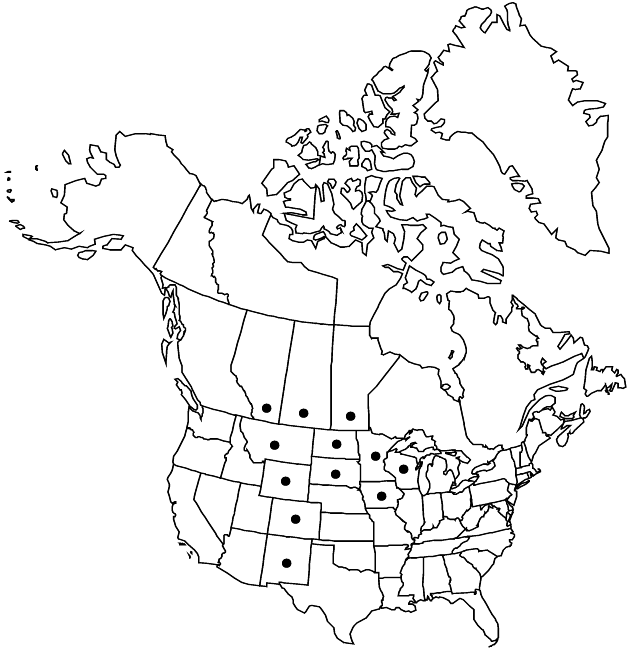Difference between revisions of "Liatris ligulistylis"
Just’s Bot. Jahresber. 29(1): 569. 1903.
FNA>Volume Importer |
FNA>Volume Importer |
(No difference)
| |
Revision as of 18:47, 24 September 2019
Plants 20–100 cm. Corms subglobose (often knotty, densely fibrous-rooted). Stems sparsely to densely puberulent, puberulent-villous, or strigoso-puberulent. Leaves: basal and proximal cauline 1-nerved, narrowly oblanceolate to spatulate-lanceolate, 90–150(–220) × 4–17(–24) mm, gradually reduced distally to near midstem, then abruptly reduced, linear or narrowly lanceolate, ascending to nearly erect, bractlike, sparsely to densely puberulent, ± gland-dotted. Heads (4–21) in open, racemiform arrays (terminal heads sometimes maturing first and larger). Peduncles usually (5–)8–15(–30) mm. Involucres campanulate to turbinate-campanulate, 10–15 × 13–18 mm. Phyllaries in (3–)4–5 series, oblong-obovate to oblong-spatulate, strongly unequal, essentially glabrous, margins with (purple) hyaline borders, erose to lacerate or irregular, apices broadly rounded to truncate. Florets 30–70; corolla tubes glabrous inside. Cypselae 5–7 mm; pappi: lengths ± equaling corollas, bristles barbellate. 2n = 20.
Phenology: Flowering Jul–Oct.
Habitat: Prairies (often wet), pine barrens, clearings in aspen and pine woods, ridges along lake shores, depressions in granite, rocky slopes, roadsides, ditches, along railroads, sand, clay
Elevation: 100–2400 m
Distribution

Alta., Man., Sask., Colo., Iowa, Minn., Mont., N.Mex., N.Dak., S.Dak., Wis., Wyo.
Discussion
Selected References
None.